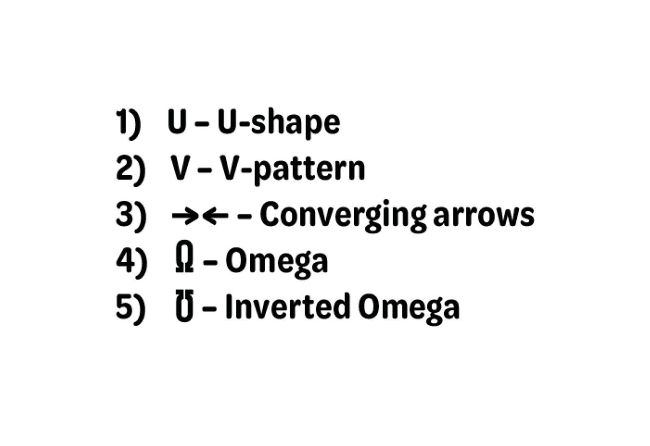EVOLUS
Do you know how to treat an omega?
The glabella types and how to assess them
Glabellar lines are not just about the classic ‘11s’ shape. Dr David Eccleston explores five different types of patterns and what this can mean for evolving your clinical practice
Addressing patient concerns about their lines and wrinkles is a mainstay of most aesthetic practices.
But what if you could take your consultations to the next level? Step away from the cookie-cutter approach and refine your recommendations to match the unique differences in the way these lines form in each of your patients.
AN INDIVIDUALISED APPROACH
In the past, studies focused on the glabellar complex typically described a standard approach to assessment that doesn’t take into account individual anatomical differences.
Yet as our understanding of anatomy has evolved, so too has the knowledge that variations in muscle contractions differ between patients. Five types of glabellar contraction patterns were first published by Ada Regina Trindade de Almeida et al.1
The understanding of anatomy makes way for a more personalised rather than one-size-fits-all approach.
Dr David Eccleston, medical director of MediZen, explains, “When considering various types of lines anywhere in the face, we know that broadly speaking, the origins of muscles, where they sit and how they work are similar. Yet how each person uses those muscles is as unique as they are. That’s why it’s important to understand the differences in the movements of muscles, gain a deeper understanding of anatomy and unlock new ways of evolve your clinical practice.”

FIVE GLABELLAR CONTRACTION PATTERNS
The two most common contraction patterns identified were the U and V shapes. Check out the other types in the Evolus Service Platform.
THE V PATTERN
The V-type glabellar line contraction pattern was identified as the most frequent type, seen in 37% of cases.1 “It is a more profound movement”, says Dr Eccleston. “At rest, the eyebrows tend to be more horizontal or rectified and lower. And due to increased involvement with the procerus muscle, the medial brow tends to be pulled down more so than in the U type of contraction.”
“By identifying the different glabellar line patterns, you can enhance your consultation with each of your patients”
Dr David Eccleston
THE U SHAPE PATTERN
The U shape was identified as the second most common type of glabellar line, found in 27% of the study cases.1 The muscles most often involved are the procerus and corrugators. “With the U shape, we tend to see approximation and depression of the space between the eyebrows with variable intensity but generally little range”, says Dr Eccleston. “As a result, the movement takes the form of the letter U. At rest, the eyebrows tend to form an arch.”
DON’T STAND STILL, EVOLVE WITH US
Evolus and Dr Eccleston have partnered to create a 30-minute course of bite-sized educational and promotional videos, specifically for healthcare practitioners (HCPs) to explore the five glabellar types. The videos explore ideas that may influence your assessments and enhance your clinical practice.
A deeper understanding of the different anatomical features helps to define an individual patient’s expression. Classifying glabellar lines makes the identification of the prevalent contraction patterns easier, which can enhance your consultation practice.1
“Understanding anatomy to evolve your clinical practice”
Dr David Eccleston
Sign up to the Evolus Service Platform www.evolus-europe.com to discover more.
Join Dr David Eccleston as your guide to the five glabellar types. He’ll review the impact of anatomy and muscle contraction on the appearance of glabellar lines so that you can view your patients through a different lens.
For treatment guides and much more, join the community.
This advertorial was written and commissioned by Evolus.
REFERENCES
1. Trindade de Almeida AR, da Costa Marques ER, Banegas R, Kadunc BV. Glabellar contraction patterns: a tool to optimise botulinum toxin treatment. Dermatol Surg. 2012 Sep;38(9):1506-15. doi: 10.1111/j.1524-4725.2012.02505.x. Epub 2012 Jul 16. PMID: 22804914.
DoP Sept 2023 UK-NP-2300009
aestheticmed.co.uk Aesthetic Medicine 33